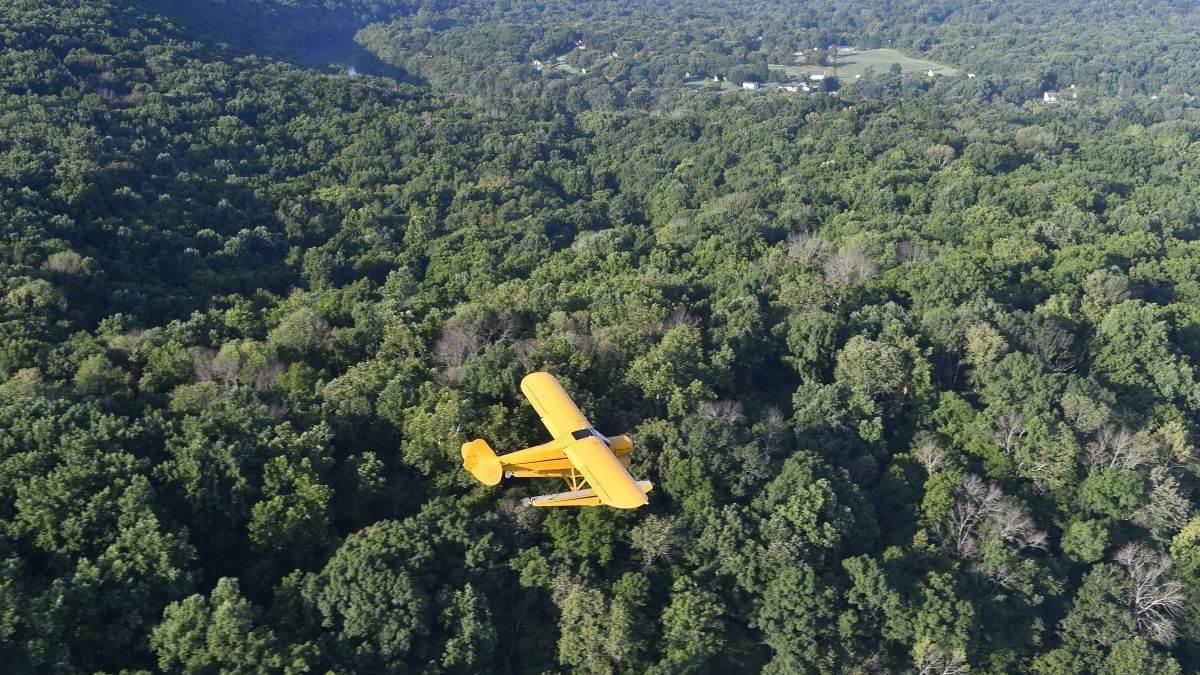Worst Case Scenarios are When your SAGA Begins
Safety SPOTLIGHT: Survive

A mantra worth knowing and repeating is SAGA, which stands for Stabilize, Assess, Gather, and Act. Iteratively going through each step—from post-impact stabilization, through the golden hour of assessment and reporting, to gathering supplies and acting thoughtfully until rescue—will give you the best chance for survival after a forced landing.
Stabilize
Immediately after a forced landing while you are still disoriented from impact, the situation can go from bad to worse very quickly. Your first act will be instinctive, regaining awareness of your own immediate situation. But once you’re in control, focus on stabilizing immediate life-threatening situations. Extricating everyone from the aircraft and dealing with critical injuries will be of paramount priority.
When people are pinned or too injured for quick extraction, a fire extinguisher readily at hand may provide lifesaving seconds. Since crew are more likely to be incapacitated than passengers, this is where your thorough pre-takeoff briefing may save lives.
Assess and Report Your Situation
When you know the danger of fire is gone, or you have evacuated to a more stable location, it is time to make a more general assessment of the post-crash scene and attempt rescue communications. Emergency medicine calls this time immediately after an accident the golden hour. If you don’t have at least basic first aid training, you should consider taking it so you are familiar with the most critical considerations, like the ABCDEs (Airway, Breathing and Circulation, Disability, Exposure). These provide a quick way to triage and stabilize life-threatening medical situations. Disability and Exposure, the last of the ABCDEs, are especially important factors in a post-crash situation.
Emergency medicine calls the time immediately after an accident the golden hour.
Assessing disability involves identifying who can help at the scene and who will need ongoing assistance or regular check-ins to verify their condition isn’t worsening. People who are initially lucid may not stay that way. Head injuries typically result in cognitive impairment ranging from disorientation to unconsciousness. If you have narcotic or narcotic-related painkillers in your first aid kit, do not give them to people with impaired cognitive function.
Assessing exposure means identifying injuries that may be hidden by clothing. But in a forced landing situation, it can also mean assessing how exposure to the elements and the dangers at the site might affect survival.
The first hour is also the golden hour for eventual rescue. The sooner first responders start looking for you, the sooner you will be found and attended to. Activate your Personal Locator Beacon (PLB) if you have one, use your radio, and try to make a call out with your cell or satellite phone. You may not be able to reach ATC now that you are on the ground, but you may be able to hail aircraft passing overhead, including jet traffic. Try 121.5 or even the control center frequency for the area.
All the while, you should be continuously assessing your situation and identifying the most pressing issues that will jeopardize your safety. Cold, wet, or windy weather makes exposure and hypothermia an immediate risk. Students of survival classes often report how fast they get cold without proper clothing or protection. If your clothing is unsuitable, your most immediate priority may be to put on more appropriate clothing or build a fire or shelter.
Gather
At first, you should focus on gathering the items needed to stabilize and get through the first hour: proper clothing, first aid supplies for any injuries, communications, and, if necessary, equipment to manage an existing fire.
The circumstances of every forced landing are so different that there is no cookie cutter formula for survival.
Next you should gather the resources you need to remain safe and assist in your rescue, like water, food, shelter, fire starter, extra clothing, and any other creature comforts that will make your wait as comfortable as possible. This is also the time to collect items for signaling. Rescue efforts can take time to mobilize, so you should count on spending the night.
Continually identify and prioritize threatening issues and gather the items you need to address them. Some priorities may be immediate, like locating and donning weather gear. Others may be less obvious, like finding a flashlight while it is still light out. Still others may be ongoing like attending to injuries. The circumstances of every forced landing are so different that there is no cookie cutter formula for survival.
Act
Act is last in the SAGA mantra. It is important to act with purpose and within the limitations of your skills and physical abilities rather than act for the sake of doing something. In emergency situations, people often act in haste and end up making their situation worse, causing injuries or draining resources. The hardest part of acting is the act of waiting.
It doesn’t matter what circumstances led to your forced landing so don’t beat yourself up. Stabilize yourself and others, assess injuries and the survival environment, gather resources, and act to address threatening issues and priority items. Then you can shift your focus to the next 24 hours and beyond. Basically, your SAGA will continue until you are rescued.
Tip: Your focus should remain on meeting basic survival needs and establishing rescue communications.
Real Pilot Story: From Miscue to Rescue
A routine flight can turn into a survival situation. Watch Real Pilot Story: From Miscue to Rescue as a series of delays, poor decisions, and lack of preparation turns a four-hour cross-country into a 30-hour survival crisis for a pilot and his family in the unforgiving Idaho backcountry.